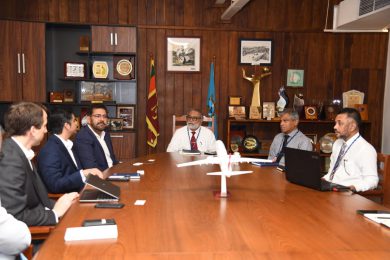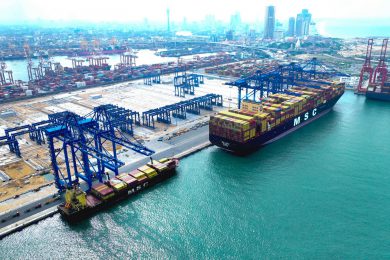From 1 January 2020, the “IMO 2020” rule means that the limit for sulphur in fuel oil used on board ships operating outside designated emission control areas will be reduced to 0.50% m/m (mass by mass) – while in designated emission control areas (ECAs) the limit will remain at 0.10%.
From 1 January 2020, sulphur oxide emissions from ships will be reduced considerably under a forthcoming International Maritime Organization (IMO) rule. This will have significant benefits for human health and the environment – but also represents a challenge for the industry.
The preparedness of all stakeholders for this significant change – as well as its challenges – were highlighted during a Symposium on IMO 2020 and Alternative Fuels, held at IMO, on Thursday 17 and Friday 18 October. The symposium brought together a range of speakers, including those from Member Governments, as well as from shipping, refineries, fuel oil suppliers and legal professionals.
“Collaboration among key stakeholders is essential for the smooth landing of IMO 2020,” IMO Secretary-General Kitack Lim said, opening the symposium, which was attended by over 300 delegates. He highlighted the tremendous amount of work undertaken to prepare for IMO 2020 by all stakeholders, since the 2020 date was confirmed in 2016, including a series of guidance and guidelines for shipowners as well as flag and port States.
From 1 January 2020, the “IMO 2020” rule means that the limit for sulphur in fuel oil used on board ships operating outside designated emission control areas will be reduced to 0.50% m/m (mass by mass) – while in designated emission control areas (ECAs) the limit will remain at 0.10%. The current limit is 3.50% so the change is significant and – for most ships – will mean a switch to new types of compliant fuel oils, so-called very low sulphur fuel oil (VLSFO), or marine gas/diesel oil. The VLSFO blends are new to the market.
Member States speaking at the symposium, including representatives from Denmark, Japan, Marshall Islands and Singapore, said that they were ready as flag and port States to implement and enforce the sulphur 2020 limit. Stakeholder meetings were a feature in many countries, bringing together industry and government officials to ensure preparedness.
In terms of supply of the new fuel oil needed to meet the 2020 limit, representatives from IPIECA, representing the oil and gas industry, and IBIA, representing the bunker industry, confirmed that supply of the low sulphur fuel oil was expected to be readily available in most locations and is already available in some. Many ships will be looking to load complaint fuel oil well before the end of 2019. However, there was an expectation of price volatility and supply and demand would have to find a new balance which could take time – especially given that this involves many different actors, from refiners, to bunker suppliers, to ships and the shipping industry.
“It is all going to be about market dynamics – but supply and demand will get in balance. It will not be an easy transition, but we will get there,” said Eddy van Bouwel, Chair, marine fuels committee, IPIECA.
Speakers touched on the challenges new blends of fuel oil might bring, including potential quality issues providing challenges, in particular to the ship’s engineers, and the need for preparedness was reiterated, including crew training and reviewing clauses in charter parties.
Simon Bennett, Deputy Secretary-General of the International Chamber of Shipping (ICS) said that the shipowner organisation was confident that IMO 2020 will be a success. “However, the huge enormity of such a regulatory game changer has never been attempted before and needs to be understood by all stakeholders.”
A representative from the International Standardization Organization (ISO) outlined the recently-issued standard: ISO/PAS 23263:2019, which addresses quality considerations that apply to marine fuels in view of the implementation of the sulphur 2020 limit and the range of marine fuels that will be placed on the market in response.
Other speakers explained how scrubbers (which will be installed on around 4,000 ships) and – to a lesser extent – LNG, are being used to meet the sulphur 2020 limit as well as the potential to reduce other emissions from ships.
Summing up the first day, IMO’s Hiroyuki Yamada, Director of Marine Environment Division, reiterated the importance of cooperation among all stakeholders and encouraged Member Governments, shipping, refinery, fuel oil supply and relevant industries, as well as charterers, to finalize their preparations for IMO 2020. IMO will make every effort to support the consistent implementation of IMO 2020 on Sulphur limit.
Day two of the symposium focused on the role of alternative fuels in the decarbonization of international shipping (details to follow).
Source: IMO























